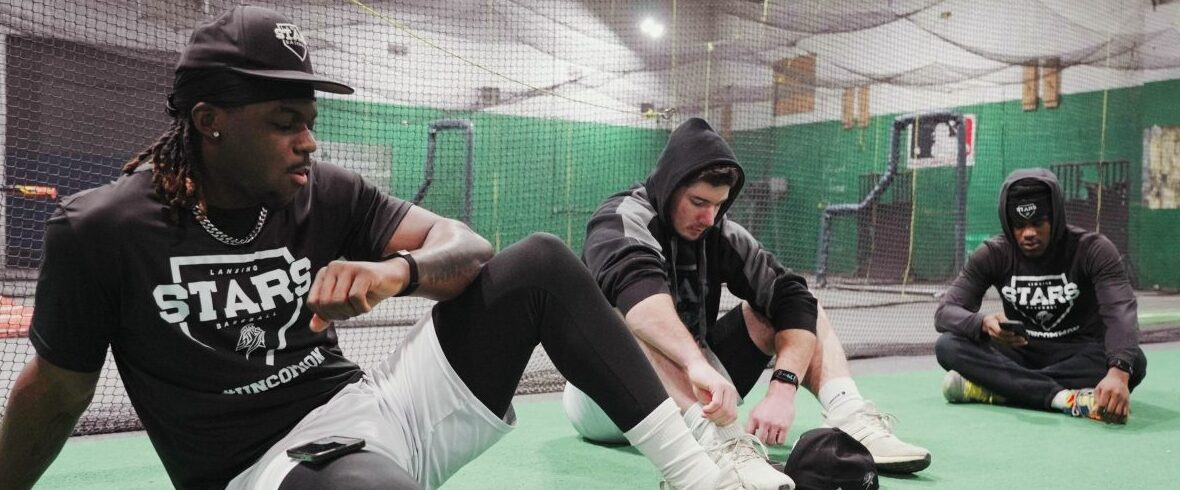
Think Quick: How Reaction Times Became Sports’ Hottest Stat
Sprinting fast is great. But what baseball coach Steven Cutter really wants to know is how quickly his players can process emotion.
He gives his team five seconds to recenter themselves after a bad at-bat or questionable call at Lansing Community College, where Cutter has led the Stars to two NJCAA college world series appearances over the last three years while listing himself as both head baseball and mental performance coach (in addition to assistant athletic director).

Lansing Community College has become a testing grounds for advanced neurocognitive assessments.
For now, that measurement remains intangible—but it might not stay unknowable for long. “It’s definitely where we’re trending,” Cutter said.
Evaluators across sports and levels of play are rapidly adopting tools to measure athletes’ minds. Along the way, they’re learning just how much of our favorite games are ultimately determined by cognitive strength.
NFL teams now regularly test draft prospects on their Athletic Intelligence Quotient, a 35-minute exam that resembles a series of video games designed to evaluate test-takers across 10 cognitive traits, including visual processing speed and memory.
Early data validated a correlation between defensive linemen’s reaction time measured as part of the AIQ exam and their sacks per game in the NFL. The same held for linebackers and tackles. With a growing sample size, test administrators have recently published research linking those scores to offensive linemen’s false start proclivities and even the career-long success rates of NFL QBs. AIQ scores are now used across sports and around the world.
Light training system Fitlight has attracted users including Manchester United and Steph Curry with a setup that promises to improve reaction times among other benefits.
Boston-based neural sensor startup Pison, meanwhile, has focused on baseball as its foothold within sports, selling a wrist-based wearable device and paired software interface that measures mental reaction time in addition to more standard biometrics like sleep quality. In the simplest version of the test, users flex their wrist in response to a flashing light. More advanced exercises track mental agility and focus metrics.
Pison’s sports performance and data analytics team presented initial findings at a recent conference hosted by the Society for American Baseball Research, showing that data gathered across five D-I baseball programs in 2024 indicated “strong correlation between an individual’s (simple reaction time) and the SABRmetrics related to batting performance.”
Those silly reaction time tests that athletes, including Caitlin Clark, keep taking in the hunt for internet virality? Maybe they’re not so silly after all.
Invisible mental talent could be a key differentiator between good and great hitters, Pison’s study suggests. And it might not be invisible for long.
“The higher up you get in the game, the less important [physical] talent is, because everybody has it,” former MLB infielder and Pison advisor Zach Sorensen said. Sorensen now works with pro baseball players and golfers as a mental performance coach. He has seen top athletes look to master nutrition and sleep the way they might refine a swing. And reaction times have offered a new growth opportunity.
“The more players that see this technology, the more players are interested in it, and they’re very competitive in getting their scores and comparing it to the guy sitting next to them,” Sorensen said.
The tool also offers a potential boon to people in Sorensen’s line of work: a rare chance to directly measure mental training’s impact. “That’s always been a concern for people in my space,” Sorensen said. “How do we quantify that we’re even doing a good job?”
Cutter, eager for any edge he might deliver his team, is already integrating Pison tech. Every kid brought into a recruiting camp takes Pison readiness tests, he said. Some newcomers to the team are also placed based on their scores. “You’ve got to have a great reaction time” to play third base, Cutter said. And a closing pitcher obviously better be able to focus.
“The mental side has been the sixth tool in baseball before, and now it’s just really a measurable thing,” Cutter said.
Pison’s tests also indicate that specific interventions can improve a player’s reaction time scores, which serve as an indicator for gameday readiness.
During the preseason, Cutter ran his players through numerous tests—caffeine an hour before play, dips in an ice bath, meditation, jump rope workouts, listening to music—to see which boosted their numbers best. He then suggested individualized pregame routines based on the results.
Come gameday, he also uses player scores to determine who is most fit for action.
“We’re making decisions on relief pitchers, depending on where their scores are for the day,” Cutter said. “We used to make decisions [based] on righty/lefty matchups and who could really keep balls down or up in the zone, and now we’re making them with those factors but also … we’re 100% making decisions based on the cognitive stuff.”
Those can be tough calls at times. But armed with newly available data, Cutter doesn’t think twice.
